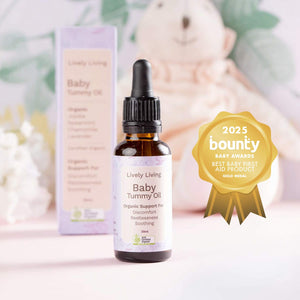Easy Organic Baby Food Recipes for Healthy Infants
Nourishing Your Little One: A Guide to Organic Baby Food Recipes
Creating organic baby food recipes offers a wholesome and nutritious start, ensuring your baby receives the purest ingredients as you introduce solid foods. This journey combines the joy of creating homemade meals with the peace of mind that comes from using organic ingredients. Discover a world of flavors for every stage.
This guide provides simple, delicious organic baby food recipes for every developmental stage. We’ll start with basic purees for those first bites and advance to more complex recipes for older babies.
Table Of Contents:
- Stage 1: First Bites (4-6 Months)
- Stage 2: Expanding Palates (6-8 Months)
- Stage 3: Proteins and Grains (8-10 Months)
- Stage 4: Exploring Textures (10-12 Months)
- Stage 5: Toddler Adventures (12+ Months)
- Tips and Safety for Organic Baby Food Recipes
- FAQs about organic baby food recipes
- Conclusion
Stage 1: First Bites (4-6 Months)
Starting your baby on solids is a major milestone. During this stage (4-6 months), single-ingredient purees are best.
These simple recipes let you introduce flavors one by one and easily spot potential allergies.
Single-Ingredient Purees
- Organic Sweet Potato Puree: Steam or boil cubed sweet potato until soft. Blend with a little water, breast milk, or infant formula. Let cool before serving.
- Organic Carrot Puree: Steam or boil chopped organic carrots until soft, then blend. This simple carrot puree is a great way to introduce your little one to the sweetness of carrots.
- Organic Apple Puree: Steam or boil peeled and chopped organic apples. Blend until smooth and serve after cooling.
- Organic Avocado Puree: Simply mash a ripe avocado with a fork and serve fresh. This avocado puree is packed with healthy fats.
- Organic Banana Puree: Mash a ripe banana with breast milk or formula if needed for a smooth puree. Making baby food with banana is super simple.
Remember, when introducing solids, start with small amounts and observe your baby for any reactions. You can add breast milk or formula to achieve the desired texture.
Stage 2: Expanding Palates (6-8 Months)
Between 6 and 8 months, babies’ palates expand, and they're ready for thicker textures.
Organic baby food recipes for this stage include thicker purees and herbs.
Flavor and Texture Adventures
- Organic Apple and Oatmeal Mash: Combine steamed and pureed apples with cooked oatmeal for added fiber.
- Organic Banana and Avocado Mash: This healthy fat and fiber combo is easy to mash together.
- Organic Carrot and Lentil Mash: Cooked red lentils add protein alongside carrots. Adding mild spices like turmeric introduces new flavors.
Remember, always introduce new ingredients one at a time to watch for reactions. Feel free to adjust the thickness by adding water or breast milk.
Stage 3: Proteins and Grains (8-10 Months)
Your little one is growing. Organic baby food recipes now incorporate more proteins and grains.
Consider using iron-rich options, keeping potential allergies in mind. Avoid honey for children under one, caffeinated drinks, and sugary foods. Introduce scrambled eggs, chicken breast, or black beans to help them discover savory flavors.
Also, consider using bone broth in their purees.
Boosting Nutrition
- Chicken Puree: Blend steamed or boiled boneless, skinless chicken breast until smooth. Consider making easy chicken puree from skinless chicken. Ensure chicken is organic, pastured, or locally raised.
- Lentil Mash: Well-cooked lentils are easily mashed or blended. Lentil mash makes a great homemade baby food.
- Organic Oatmeal Cereal: Offer plain cooked oatmeal as a great homemade baby food.
- Brown Rice Cereal: Mix well-cooked brown rice with no-sodium stock, breast milk or formula for desired consistency. Brown rice cereal makes great homemade baby food.
Use a food processor for a smooth puree. If needed, use a little water, breast milk, or formula for the right consistency.
Stage 4: Exploring Textures (10-12 Months)
Closer to toddlerhood, soft, easy-to-handle foods are key. Adapt your meals into easily digestible recipes using boneless skinless chicken or turkey, ensuring organic sourcing.
Organic baby food recipes now include soft, cooked veggies, diced fruits, and appropriately cut proteins. Focus on balanced fat intake, with options like avocado or olive oil to support brain development. Use quality salt.
Introducing solids around this age sets the stage for healthy eating habits later in life. This can help to support a balanced diet for their life. This will also help avoid any diet related illnesses when they get older.
Safe and Exciting Family Foods
- Soft Cooked Vegetables: Offer steamed broccoli florets, soft cooked carrots, or diced sweet potato. Introduce vegetable puree slowly.
- Small Pieces of Soft Fruit: Offer small pieces of ripe banana, mashed avocado, or diced soft fruits. Blueberry puree and banana puree are great options for babies who have already been introduced to some fruit. You can also add some pears for more variety.
- Diced Proteins: Finely shred cooked chicken or turkey, ensuring easy chewing. Chicken breast or turkey provide essential protein for their development.
Stage 5: Toddler Adventures (12+ Months)
Toddlers are curious about new tastes. Encourage diverse, textured meals with organic combinations and finger foods, avoiding added sugar and unhealthy fats.
Focus on providing nutritious food choices to meet the baby’s nutritional needs and help them avoid picky eating habits later.
Creative Combinations for Growing Toddlers
- Vegetable and Cheese Mini Muffins: Mix grated zucchini, shredded cheddar cheese, and whole wheat flour.
- Quinoa and Veggie Stir-Fry: Stir-fry bite-sized veggies with cooked quinoa. A quinoa and veggie stir-fry offers a complete and balanced meal.
- Fruit and Yogurt Parfait: Layer organic yogurt with berries and a sprinkle of granola.
Tips and Safety for Organic Baby Food Recipes
Introduce one new food at a time to observe for reactions. Plan your baby’s meals, make a grocery list, and think about adding additional liquid if needed. Adding small amounts of additional liquid as you prepare foods will help your baby adjust to different textures as they grow. Create a simple plan to make introducing solids a joy. These recipes provide several baby food puree recipes.
Batch Cooking and Storage
Batch cook and freeze purees in ice cube trays for portioning. Use airtight containers for easy storage of baby food purees and label containers clearly for quick identification and to keep track of the storage baby food.
When making baby food, start with at least one cup of the main ingredient for sufficient puree.
Use FDA-approved airtight containers and label them clearly. Follow FIFO (first in, first out) for refrigerator storage. Transferring puree cubes from ice trays into these containers allows easier organization.
Safe Handling of Foods
Maintain cleanliness to prevent cross-contamination between raw and cooked foods. Ensure proper temperature control for food safety. Introduce more iron-rich options like bone broth with breast milk and research shows early allergen introduction may reduce the risk of allergies.
Explore Lively Living's Organic Kids Essential Oils
if you value using organic ingredients for your childs wellbeing, explore Lively Living certified organic range of kid friendly essential oils to further help their breathing, sleep and wellbeing
Lively Living Organic Babies & Kids Essential Oils
FAQs about organic baby food recipes
How do I make organic food for my baby?
Start with single-ingredient purees, like steamed and blended sweet potato or avocado. As your baby grows, introduce combinations and textures, increasing chunkiness gradually.
Is it cheaper to make your own organic baby food?
Homemade organic baby food is typically cheaper than store-bought pouches. This helps control ingredients and your budget. However, consider prep time, which store-bought options eliminate. Balance budget and time to decide what works best.
Does homemade baby food need to be organic?
Organic isn't mandatory, but it minimizes exposure to pesticides and supports sustainable farming. Thoroughly wash conventional produce if used. Prioritize organic whenever feasible for maximum benefit.
Is organic baby food better for your baby?
Studies suggest organic foods have higher nutrient levels. They reduce exposure to potentially harmful substances. Choosing organic baby foods, such as sweet potatoes, provides peace of mind knowing your baby is consuming wholesome foods. They also give you the ability to incorporate other fruits, like blueberries, for blueberry puree or fruits to mix with veggies.
Conclusion
Making organic baby food creates a healthy foundation for your baby’s development. It introduces a world of flavors and textures, promoting adventurous eating habits as they grow. This sets them on a path of enjoying wholesome, natural foods. Include other natural and organic products into your childs routine where possible


























